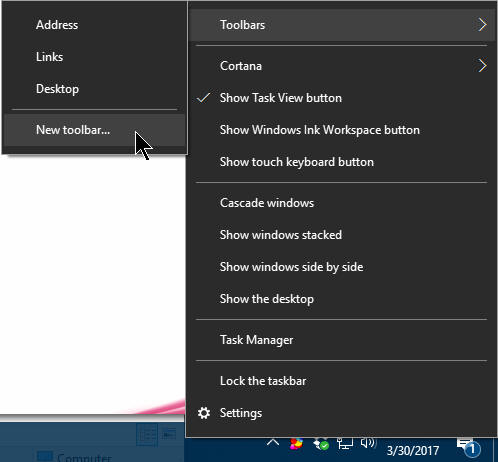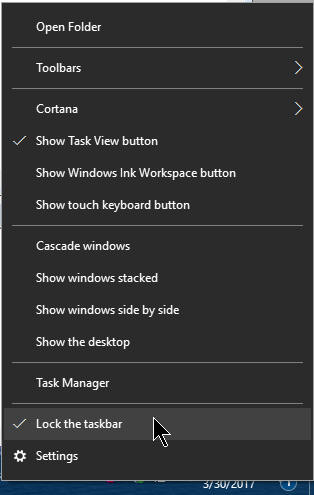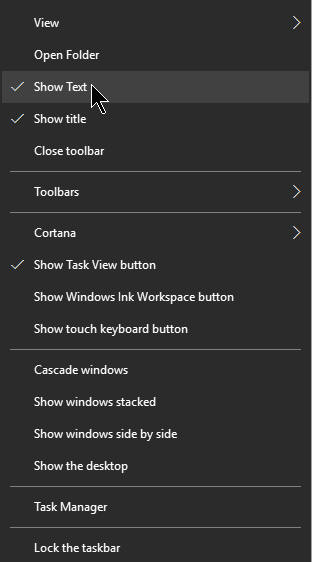The Problem
Back in Access 2003 and Windows XP, it was easy to make a shortcut to open a specific Access database – just right-drag the database from an Explorer pane to the Quick Launch area of the taskbar. But if you try to do this with Windows 7 or higher, all that happens is that the database is pinned to the Jump menu of the main Access taskbar icon:
![]()
The Solution
Windows 7, 8 and 10 don’t have a Quick Launch toolbar, but I found a way to get a database shortcut onto the taskbar, as some people like (personally, I like the Jump menu just fine). This solution works in Windows 7 through 10. In short, I made a new toolbar, added one item to it, and made the title and database name invisible, so only the Access icon showed. Then the user can click this item (actually the first and only item in a toolbar) to open the database. Here are the steps in detail:
- Create a folder for the new toolbar – I made one called Taskbar Items under the default Documents folder.
- Right-drag the database to the new folder, and select Create Shortcuts Here from the context menu when dropping it.
- Edit the shortcut name as desired.
- Right-click the taskbar, click Toolbars, and select New toolbar…

- Select the Taskbar Items toolbar:

- The new toolbar appears on the right side of the taskbar, with the toolbar name displayed:

- Unlock the toolbar if it is locked:

- Right-click the toolbar name and uncheck the Show Text and Show Title items (these items have to be unchecked in separate actions):

- Now you will see a small Access icon representing the database, that you can click to open the database, just as in Windows XP:

Have a question about something in this article? You can receive help directly from the article author. Sign up for a free trial to get started.


Comments (0)